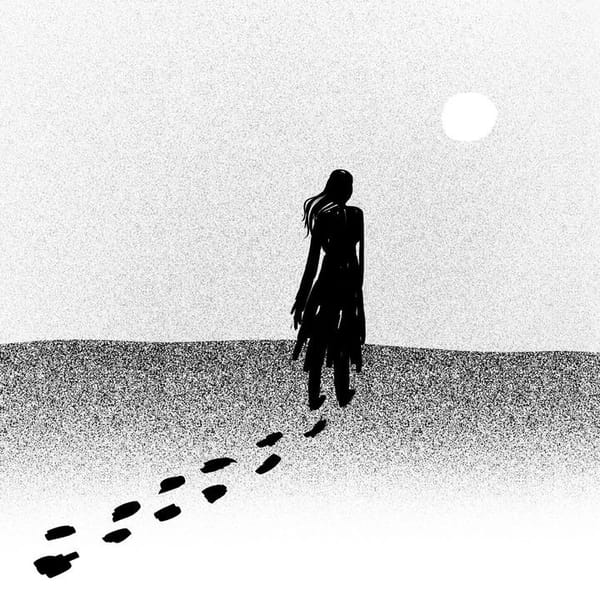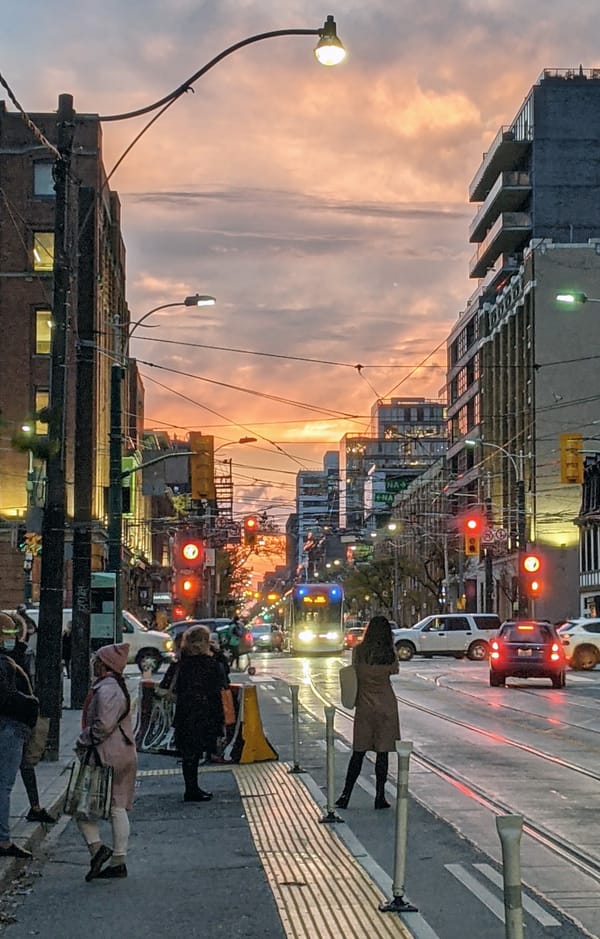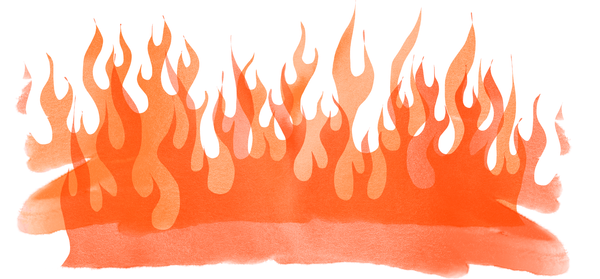The History of the Police
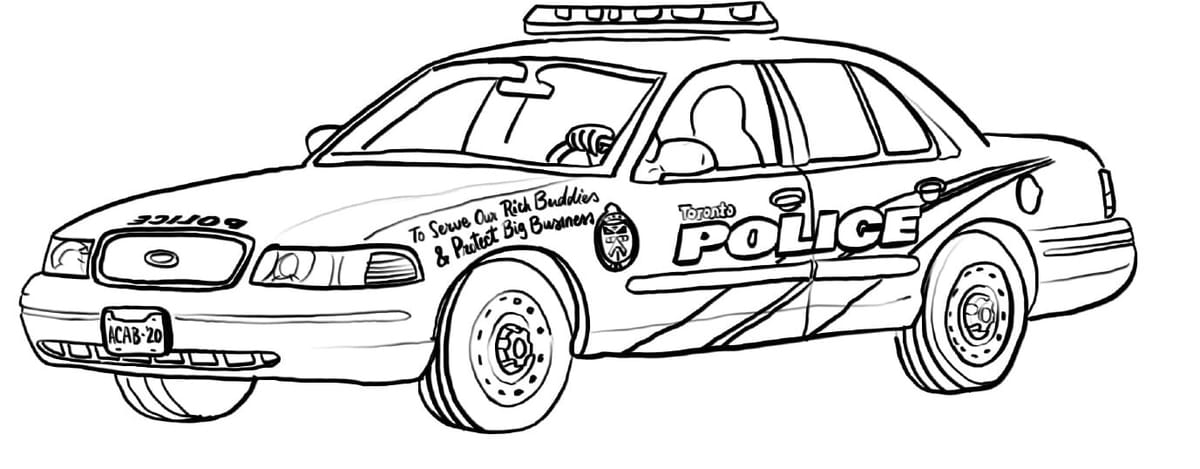
The history of the police is best understood through the process of enclosure, urbanization and industrialization in England. Why England? Canada and America are English colonies with English institutions, norms and cultures.
For much of human history, people worked the land and paid a tithe to a local sovereign, chief or lord. This tithe was essentially the equivalent of a tax, paid generally as a portion of the food or goods they produced, and in return people were guaranteed protection against foreign invaders. That’s just about the oldest social contract. Food for protection. There were no real restrictions on the use of land, the area around a lord's manor was called the commons. This was the feudal system, peasants working the land in a state of perpetual subsistence.
This relationship slowly changed over the course of hundreds of years across Western Europe through a process called enclosure which meant the consolidation of smaller farms and landholdings into larger farms and landholdings. It was done through legal means, but enforced with local militias. The English Civil war was the inflection point, with the consolidation of the commons gathering pace in the late 1600s. Each period of consolidation, be it the 1530s or the 1640s led to rebellions from the peasant class, that were ultimately quashed.
Enclosure is best understood as an agreement between the land-owning class and the political elite (often the same people), which allowed the land-owning class to enclose (or fence off) land, and charge higher rents for their new properties. Over the course of hundreds of years, the peasants were slowly enclosed off their land, through parliamentary legislation and carried out with force. One of the smarter innovations was the requirement that enclosed land have a fence, and the cost of building a fence was almost always more than the peasant could afford, so the lord would step in and take the land. Enclosure is best understood as an economic, social and political tool used to control the peasants. But enclosure was only step one.
Where do these peasants go? To the cities of course. We now call the process urbanization, and much like the slow creep of enclosure over the course of hundreds of years, the growth of cities such as London in England underscore this. The population of London went from 120,000 in 1550 to 350,000 in 1650 to 700,000 in 1750 to 2.3 million by 1850. Note that between 1200 and 1550 the population of London was generally around 100,000 people, give or take a Black Death.
Bit of a problem though… These people used to work the land, to farm, which would guarantee their basic needs. Enter our third fighter, the one ring to rule them all: industrialization. Without industrialization we don’t have the innovations that lead to more efficient food production, which in turn rapidly increased the populations of European countries, which in turn led to unprecedented waves of migrants to North America. And this is where the police come in.
In keeping with history, the early 1800s were marked by intense periods of labour unrest in the United Kingdom. A few hundred years of enclosure plus rapid urbanization created widespread poverty throughout the cities. The signal event was the Peterloo Massacre of 1819, when tens of thousands of people gathered in Manchester to protest poverty and the displacement of skilled work by industrialization. The rally was declared illegal by the authorities, in keeping with a series of vagrancy laws designed to force people into ‘productive work’. The early 1800s were also awash with ‘luddites’, folks who were so opposed to industrialization that they went around smashing machines. The British Army was stretched thin with conflicts around the world, from India to North America, so the British state recognized the necessity for a force that could maintain both political control and help produce a new economic order of industrial capitalism.
In 1829, Sir Robert Peel created the Metropolitan Police force, the first of its kind in the world, and replaced the local ad-hoc system of community watchmen that had predominated for centuries. (Whenever there was massive civil unrest, local magistrates would call in the army or militias, who were extra violent)
*This led eventually to the creation of the Royal Irish Constabulary, which for about a century was the main rural police force in Ireland. It played a central role in maintaining British rule and an oppressive agricultural system dominated by British loyalists, a system that produced widespread poverty, famine and displacement.*
Peel’s key innovations included uniforms, an emphasis on ‘crime prevention’, which required regular patrols through neighbourhoods. All in all, it was professional.
The main functions of the new police, despite the claims of political neutrality, were to protect property, quell riots, put down strikes and other industrial actions, and produce a disciplined industrial workforce.
“Stop to consider how the so-called owners of the land got hold of it. They simply seized it by force, afterwards hiring lawyers to provide them with title-deeds. In the case of the enclosure of the common lands, which was going on from about 1600 to 1850, the land-grabbers did not even have the excuse of being foreign conquerors; they were quite frankly taking the heritage of their own countrymen, upon no sort of pretext except that they had the power to do so”
- George Orwell, On the Origins of Property and Land, Tribune, August 1944

Across the Pond…
The London model made its way across the pond to Boston by 1838 and spread through northern cities over the next few decades. The model had to be adapted to the American context, where the combination of immigration, rapid industrialization and slavery required a far more repressive model of social control. As had been the case in the UK, Boston’s political and economic elite were responding to the widespread social disorder associated with urbanized working classes ravaged by industrial capitalism. Using local militias to quell social unrest was proving untenable, so a professional civilian police force was required.
So far, the story is more or less the same as that in the UK, political and economic elites working together to truncheon workers back to work. Pretty simple story. That’s what cops are for right? Protect private property and ensure workers are working.
Except that North America had slaves. Millions of slaves. Human beings treated as livestock, as resources to be used up, bled dry and discarded. And North America had slave patrols, that pre-date the “invention” of Police in the UK. As far back as 1704 in South Carolina, local groups of armed young white men were rewarded with money or tobacco for catching ‘escaped slaves’. Slave patrols continued right up until the civil war, even patrolling and catching freed slaves in the North. After the Civil War, slave patrols were replaced by local policemen and the KKK, as towns and cities in the south developed new and more professional methods of control. The main concern was forcing newly freed blacks into subservient economic and political roles. New laws were promulgated, outlawing vagrancy, so local sheriffs could arrest free blacks on flimsy to non-existent charges like ‘loitering’ and then drive them into the criminal justice system. These same sheriffs and local judges would also get kickbacks from employers who wanted from African-Americans working on prison chain gangs. It’s really truly not a mistake that African-Americans are disproportionately incarcerated. It’s actually the point.
In raw terms, there are nearly as many incarcerated African Americans today as there were during slavery. There were 3.9 million slaves in 1860, and 3.3 million disenfranchised African Americans in 2016.
Invariably, this wasn’t just a ‘southern thing’ as our culture likes to think. In the north, political leaders were genuinely fearful of the migration of newly freed blacks, whom they viewed as inferior. Ghettos were established to control the growing population, and right through the 1960s this was accomplished using urban planning, the police and excessive force.
And North America had slave patrols, that pre-date the “invention” of police in the UK. Slave patrols enforced the slave code. Which was a series of informal laws across the colonies to police black bodies and establish white supremacy. In the South, white males between the ages of 21 and 45 were required to serve on a slave patrol for at least 6 months. Forcing white people of all classes to participate in the slave patrols was critical in ensuring racial hegemony and harmony. For how else do you ensure the majority, landless, poor white male population had no reason to revolt against the large plantation owners. You still see this dynamic in play today, with the phenomenon of “racist poor rednecks” railing against black and brown folks, when in fact, their plight is entirely because of rich white folks.
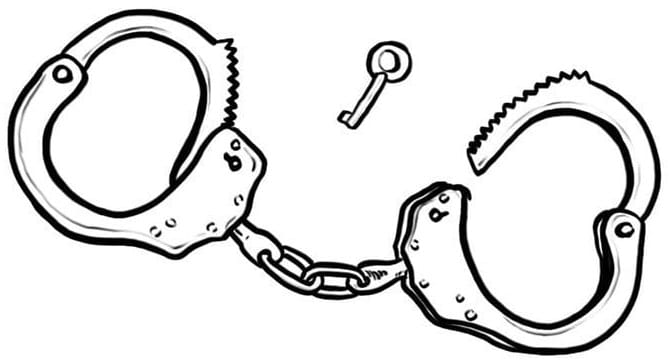
We like to forget, that as a North American culture, a civil war was fought over the question of slavery. Not states rights, or freedom or any of that bullshit. Slavery. But. The 13th amendment, which abolished slavery, had one critical condition: slavery is allowed as punishment for a crime.
“If all we have to do is make them criminals and then put them back in slavery then that’s what we’ll do.”
- Khalil Gibran Muhammad.
The South was largely agrarian, rural, and underdeveloped, and before the civil war, didn’t actually have a police force - just slave patrols. So the political elite created a new police force, but they also empowered local vigilantes to police black bodies. The KKK was founded in 1866. The KKK infiltrated every aspect of Southern statecraft, from the new police, to the judiciary all the way to the legislature. The main concern was forcing newly freed blacks into subservient economic and political roles. New laws were created, outlawing “vagrancy”, so local sheriffs could arrest free blacks on flimsy to non-existent charges like ‘loitering’ and then drive them into the criminal justice system. These same sheriffs and local judges would also get kickbacks from employers who wanted from African-Americans working on prison chain gangs. It’s really truly not a mistake that African-Americans are disproportionately incarcerated. It’s actually the point.
In raw terms, there are nearly as many incarcerated African Americans today as there were during slavery. There were 3.9 million slaves in 1860, and 3.3 million disenfranchised African Americans in 2016.
The North, under Ulysses S Grant had to invade the South again in 1871 to enforce African-American’s right to vote, hold office, serve on juries, and receive equal protection under the law.
This allowed for a generation of relative peace and stability, with over 1500 African-Americans holding elected office during the reconstruction period. The South fought back though, and political elites managed to push through Jim Crow Laws at the turn of the 20th century to reassert white supremacy and police black bodies. The KKK returned in full force, supported by the state.
Consequently, African Americans migrated north. In 1910, 90% of African Americans lived in the South. By 1960 it was closer to 50%. Over 6 million people migrated over a 50 year period, literally running away from racism, white supremacy and state-sponsored terrorism.
Expecting freedom, coming north was a shock. The professional police had spent the best part of the 19th century, much like in the UK, truncheoning workers. Especially foreign workers. Especially foreign workers agitating for socialist causes. The police were essentially a gang. They policed different ethnic groups (basically anyone that wasn’t a whiteAnglo Saxon protestant), political enemies and labour strifers. That was their function. Making sure these ‘out’ groups had the minimum freedom required to do their jobs.
So this was the context of the North when the Great Migration started. Labour unrest. Now there were blacks competing with whites for jobs. And we all know how this story unfolds, we’ve seen it a thousand times from Brexit to Trump. Segregation was the answer. Importantly, and critically, the police sided with whites. If a black family moved into a white neighbourhood, their house would be firebombed, and the police would consistently arrest the black family.
This all culminated with the Red Summer of 1919. There had already been a dozen race riots across northern cities in the previous summers. Without fail, every race riot was characterized by whites attacking blacks. That is a conclusive historical fact. Take the Chicago Race Riot of 1919 for example. Beaches in Chicago were informally segregated, and a black child made the mistake of crossing the underwater segregation line. His punishment? Literally getting stoned to death by a mob of white people. The blacks complained to the police, who did nothing. The whites were so incensed at the temerity of the blacks for even daring to complain, so they went home, grabbed weapons and started attacking black people and businesses. Black folks, at this point, fought back. And after four days, the rioting was quelled and blacks were arrested. Many black families returned to the South.
Prohibition and the subsequent New Deal was the final nail in the coffin for black folks in the North. The police literally couldn’t handle organized crime, so they ended up joining forces in many cases. This led to the creation of things like the FBI to further professionalize law enforcement, and introduced innovations such as patrol cars, information sharing and databases.
Most of the bootleggers were poor, white immigrants, and this is how the Italians and Irish, and other assorted “catholic” out-groups joined whiteness. By working with, and then becoming police.
The New Deal, in response to the Great Depression targeted white families at the expense of black families. Basically, the New Deal targeted all the white people who had been agitating since the 1890s, while systematically excluding black people. Khalil Gibran Muhammad calls this “the consolidation of whiteness”.
“The function of police are to control essential workers, the people at the bottom of the economic hierarchy, who were expected to build the infrastructure of the country”
- Khalil Gibran Muhammad, speaking on the Throughline Podcast, June 4th 2020.
After World War Two, African Americans who fought Nazi’s under the auspices of ‘freedom and democracy’ came back home as second class citizens. The central animating factor behind the civil rights push in the 1950s was the police. That’s been the one, consistent institution of statecraft used to control black bodies. To serve (the rich) and protect (private property and white supremacy).
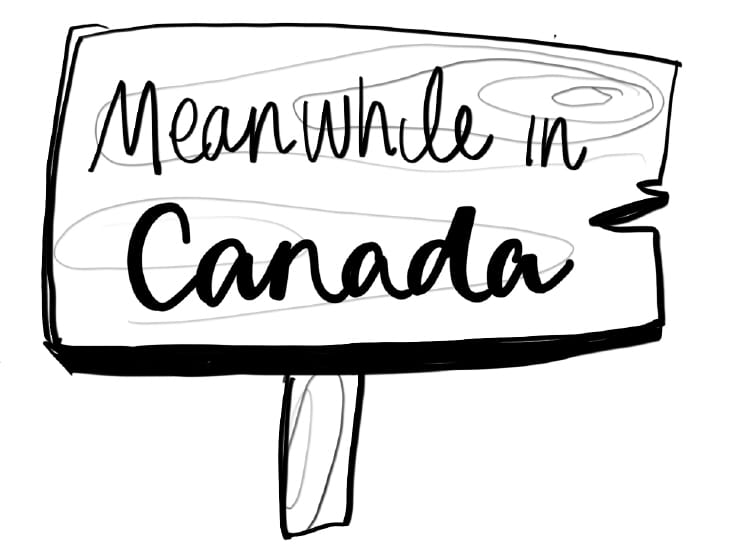
Meanwhile, in Canada, the NorthWest Police (they were rebranded as the RCMP in 1920) was created by Sir John A Macdonald in 1873, to purportedly patrol the northwest territories’ (basically everything between Manitoba and British Columbia and up) but actually to clear out the Indigenous peoples living across the Prairies so they could build a railroad. The Federal Government passed the Indian Act in 1876 which exemplified Hannah Arendt’s banality of evil. The Indian Act defines who is an Indian and how they can operate. It forcibly segregated Indigenous people, dispossessed them of their land and created the Reservation system. The relationship between the Federal Government, Indigenous People, the RCMP and Land Rights continues to be the central controlling tension of Canadian Law Enforcement.
The Reservation system explicitly restricted freedom of movement: you now needed permission from the state to leave a reserve. Which was enforced by the RCMP. Assiduous students of history will note the similarities with the slave code.
“When the school is on the reserve and the child lives with its parents, who are savages; he is surrounded by savages, and though he may learn to read and write, his habits, and training and mode of thought are Indian. He is simply a savage who can read and write.” - Sir John A Macdonald, 1883.
“Evil comes from a failure to think. It defies thought for as soon as thought tries to engage itself with evil and examine the premises and principles from which it originates, it is frustrated because it finds nothing there. That is the banality of evil.”
― Hannah Arendt, Eichmann in Jerusalem: A Report on the Banality of Evil
Of course, this did not have the intended effect. Cultural genocide requires novel methods of control. So in 1880s the Indian Act was amended again, with a new provision: Residential Schools. These schools aimed to assimilate Indigenous children into “euro-Canadian” culture. Children were not permitted to speak their native languages, boys' hair was cut off, traditional clothing was forbidden and they were all given Christian names. Few went to these schools at first.
“Our objective is to continue until there is not a single Indian in Canada that has not been absorbed into the body politic and there is no Indian question, and no Indian department, that is the whole object of this bill.” -Duncan Campbell Scott
The Indian Act was amended again in 1920 to make attendance at Residential Schools compulsory. The RCMP and Indian Affairs agents were charged with rounding up the children, and imprisoning any parents who tried to hide them.
The litany of abuses suffered by children in these institutions is horrific. Physical and sexual abuse were commonplace and ignored. The Federal Government even performed medical experiments on Indigenous Children in the 1940s without consent. Assiduous students of history will note the similarities with medical testing on blacks in American around the same time. Eugenics was cool guys!
The Federal Government, displaying ironic foresight, commissioned a report in the early 1900s to assess the health conditions of students at the schools. Dr Peter Bryce excoriated the institutions, outlining the terrible conditions. His report was ignored.
If a child ran away from a school, one of two things would happen. They would either be caught by the RCMP and brought back, or they died of exposure.
The first residential school opened in 1863 and the last closed in 1996. The federal government began the slow process of dismantling the schools in the 1970s after protracted lobbying from the Assembly of First Nations and the highly publicized death of 12-year old Chanie Wenjack. He ran away from a Residential School in 1966 after suffering sexual abuse and was found dead near a train track in Northern Ontario.
Before Confederation, Land Rights in what was called Canada were largely held by the Hudson Bay Company, who had petitioned the British Crown back in the 17th century for a commercial charter over Rupert's Land (Northern Ontario, the Prairies and the Northwest Territories). But they never actually controlled the land. They lived side-by-side with a variety of Indigenous bands. Confederation changed everything. The Federal Government purchased Rupert’s Land from the British Crown in 1870.
The two crises with the Metis clearly demonstrate the shifting relationship between the Canadian State, its police force and racialized communities. In both crises, 1870 and 1885, this Marxist historian believes the Metis had every right to the land they were protecting. The Canadian government disagreed. They sent in the army in 1870 to crush the Metis. When they sent in forces to crush the Metis again in 1885, it was the Northwest Mounted Police.
Every single Land Rights issue since then has involved RCMP repression. From Oka to Wet’suwet’en, the RCMP continue to be the strong arm of the Canadian government with indigenous repression, and the RCMP disproportionately use violent force. CBC found that between 2000 and 2017 118 of the 461 police-based killings were committed by the RCMP. A full 25 percent.
And friends, that’s just the RCMP. The OPP killed Dudley George in Ipperwash after Conservative Premier Mike Harris purportedly said: I want those fucking Indians out of the park.
North American policing is inexorably linked to violence against slaves and indigenous people buttressed by white supremacy. As well as the usual logic: protect business and private property.
Works Cited
The End of Policing - Alex Vitale
Days of Destruction, Days of Revolt - Chris Hedges
America the Farewell Tour - Chris Hedges
A Brief History of Neoliberalism - David Harvey
A People’s History of American Empire - Howard Zinn
21 Things You Didn’t Know About the Indian Act - Bob Joseph
Pressed Vol. 4: An Exploration of Canada’s Long History - Rashid Mohiddin
We Were Eight Years in Power - Ta-Nehisi Coates
Empire of Necessity - Greg Grandin
The New Jim Crow - Michelle Alexander
White Fragility - Robin DiAngelo
The Atlantic
NPR’s Throughline
CBC’s Party Lines
CBC News
The Toronto Star
The Globe and Mail
Statistics Canada
The Guardian

